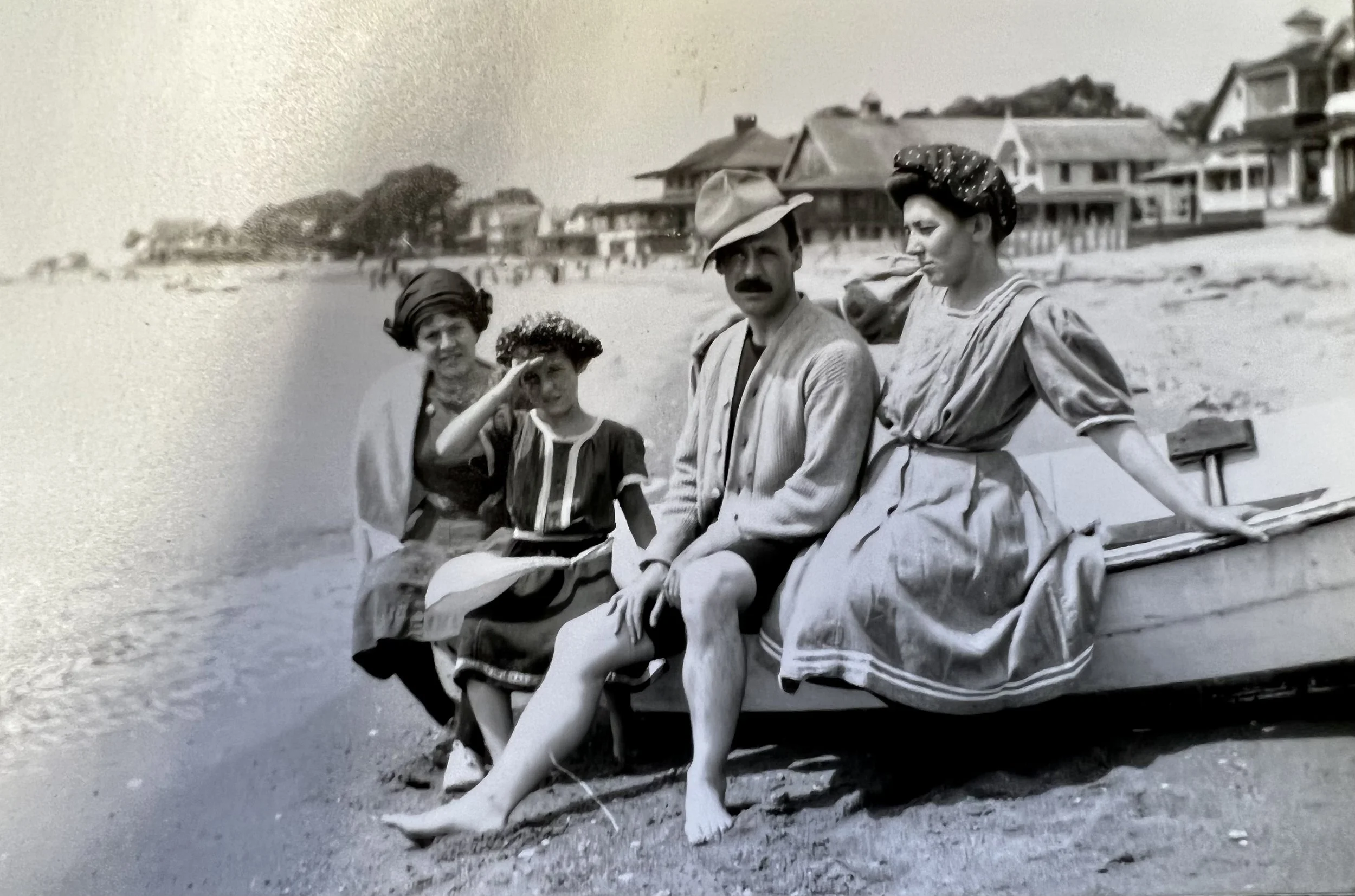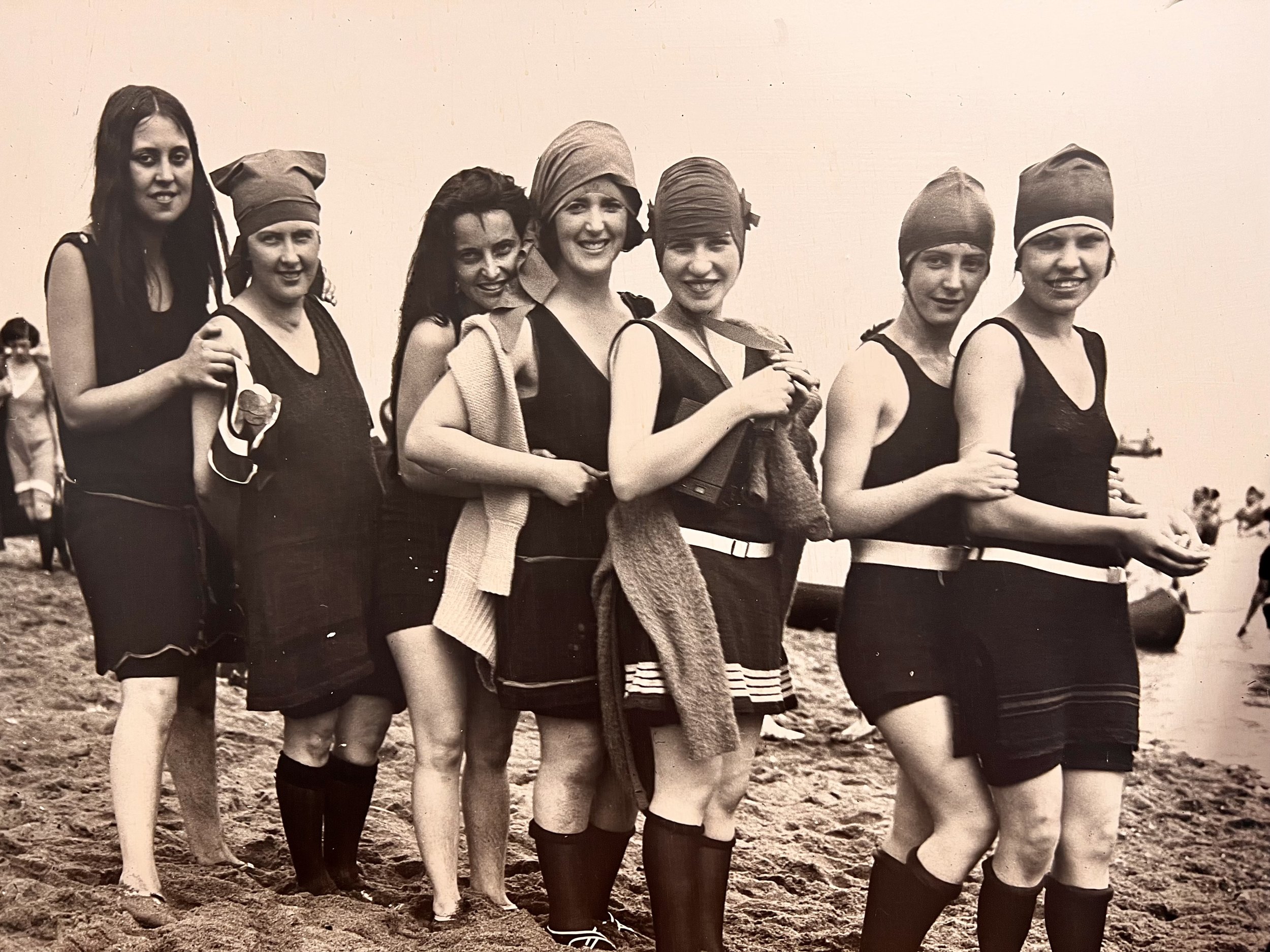Momauguin and Half Mile Island: An Historical Journey - Part III
CHAPTER 6: The Good Old Summertime
Many nearby shoreline towns enjoyed quiet winters and hectic summers. For example, Bridgeport had “Pleasure Beach,” Milford had “East Broadway,” West Haven had “Savin Rock,” and East Haven had “Cosey Beach.” Each in their heydays had their own personality but shared people’s love for fun, good food, great music, frolicking in the sun, and blowing off steam.
As trolley lines were extended to the water and auto ownership quickly grew in popularity, the East Haven beaches continued to offer families a great option for summer weekends and vacations.
If you wanted to see the area, you simply took a seaplane ride off the beach at the Momauguin Hotel.
In the 1920s, for five dollars, one could obtain a seasonal license to operate a pool room, a Chinese Laundry Game, an arcade, any number of games of chance, or simply an ice cream stand. During Prohibition, licenses strictly regulated the sale of “temperance drinks,” although it was common knowledge how to visit some dark back room or cellar for some Santa Cruz rum recently floated in oak barrels to the shore in the dark of night.
No one spends time at the beach without food and drink. Sidewalk stands, restaurants, and the hotels all offered options to quell any size appetite. Charlies Lunch, known for its chowders, and possibly made from a converted trolley car, was situated on the left and northerly side of the “car bridge” crossing onto Mansfield Grove, possibly where the entrance to the 2 Mansfield Grove Road garage is today.
Rossiter’s Clam Bakes, Sheep Bakes, and occasional Possum Bakes were held on the hill (which we can assume is where the cottage campers exist today) and were very well attended. Charles, J. H. Rossiter’s son always made sure plenty of chowder was sent up to the hill for the clam bakes.
William (Billy) Ashmore worked for Seamless Rubber Company in 1926 and was probably laid off during the Great Depression. To make ends meet, he and his wife took over Charlies Lunch, changing its name to Billy’s Restaurant, and eventually he moved across the creek to what was then Jenny’s Tea Room at 3 Cosey Beach Avenue. New owners Orlando and Josie Orifice named the restaurant Beachhead in 1942 and bought the property in 1944.
Local historians have written that the Beachhead had multiple owners over the years before the latest change in name and ownership as The Lobster Shack. For readers who follow such details, some of the owners included: Orlando & Jessie Orifice 1942; Neil Vigliante 1971; Pasquale Criscuolo 1978; Angelina Criscuolo 1986; and Ms. Fucci and Ms. Bucci in 1994.
The restaurant business is notorious for name changes and failures. Cosey Beach restaurants and inns were not immune to such events. Here are a few additional pictures of restaurants at the beach.
One of the oldest and most talked about venues was Don’s in Mansfield Grove. At times a restaurant, a dance hall, a music venue and a skating rink, it was a favorite watering hole for Yale Alumni Associations and always popular for frozen custard on a steamy August afternoon.
Cab Calloway, Rudy Vallee, Guy Lombardo, and Glenn Miller are notable celebrities who performed here on tour. After Don’s was converted to a skating rink, other venues took its place. In the 1960s for three dollars, a high school senior and his date could enjoy an after-prom party at the Horizon Club, featuring music by Tommy and The Rivieras.
After the turn of the 20th century, primitive bath houses and changing rooms were supplanted by well designed changing rooms on the beach or at businesses like the Sea Spray Baths on Cosey Beach Avenue. There is nothing better than the sun on your face, the wind at your back, and a day at the shore.
This is one of several paintings donated to the East Haven Historical Society by the family of Margaret (Peg) Mansfield, a local artist, whose possible lineage to settlers Dennis and Caroline Mansfield could not be determined.
Cosey Beach was well known for entertainers on tour and locals at the beach. In 1955 this reputation resulted in using the beach to promote the movie ”It Came from Beneath the Sea.”
CHAPTER 7: A Summer Playground
In the January 10, 2012, issue of The Patch, the lead article describes the campers’ community as a magical place where “for almost 100 years generations of the same families” have turned the community into “a summer playground.” Camping on the hill had humble beginnings in the 1870s, when Dennis Mansfield created a modest resort and rented roughly seventy haphazardly placed camp sites were rented in the early years primarily to hunters and outdoorsmen. For those less inclined to sleep under the stars Mansfield built the two-story Rocky Point Hotel, complete with restaurant and water views.
By the end of the century trolleys made the resort more popular with families. After World War II and the rapid growth of automobiles for leisure trips, the more primitive sites were gradually replaced by surplus Army tents, typically 10’ x 16’ square.
One local historian and resident of the campgrounds was George Uihlein, one-time president of the Southern Connecticut Gas Company. In one of his many historical writings he shared a memory from the 1920s:
“One of the most exciting days of my early childhood was the day after school closed in June when my family would move to the shore … That morning we loaded the truck with most of our camping needs … the World War I surplus Army tent and pole, kerosene stove, dishes, pots and pans, an icebox, table, chairs, beds and bunk beds, two chests of drawers, etc. The trunk was piled high, with everything held on by ropes … I got to ride with my father and Mr. Wark in the cab (of a rickety old Model T truck,) my sister Ellen and Mom took the trolley car.”
Families returned to the same spots year after year. Tents were improved and enlarged; porches were added to many. Eventually people wanted to convert tents to cottages, adding indoor plumbing, sewers, and town water. Jesse Bartlett, then owner of the land, gave his approval for the conversions, insisting that cottages retain the original footprint of the tents they were replacing.
In 1966 the property was purchased by the “Mansfield Grove Campers Association Inc.” The members of the Association were cottage owners who had been renting the property. The Association owns eight acres of campground plus four acres of wetlands to the north. The campground is sandwiched between Whaler’s Point to the north and Four Beaches Condominiums to the south. With direct waterfront views and access to a private beach, it is no wonder that many of the cottages are owned by the same families, generation after generation.




























